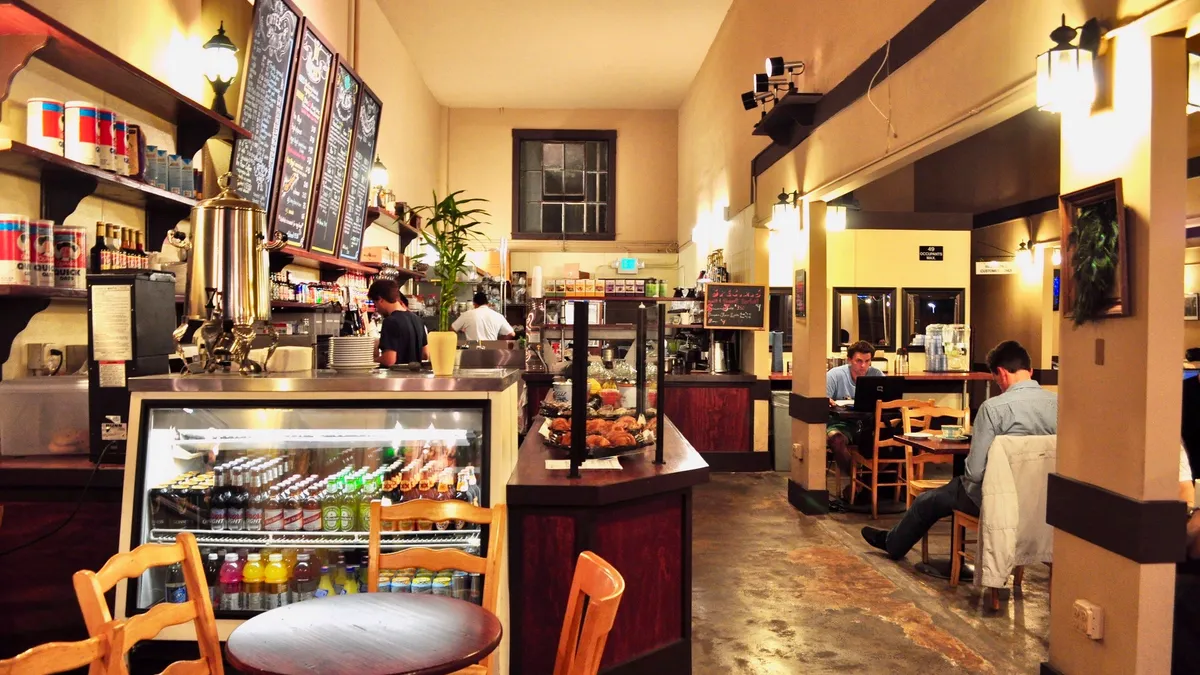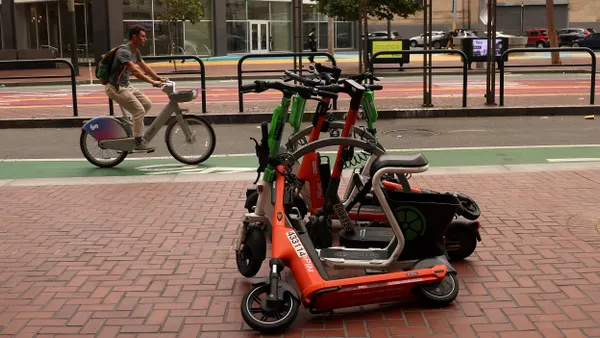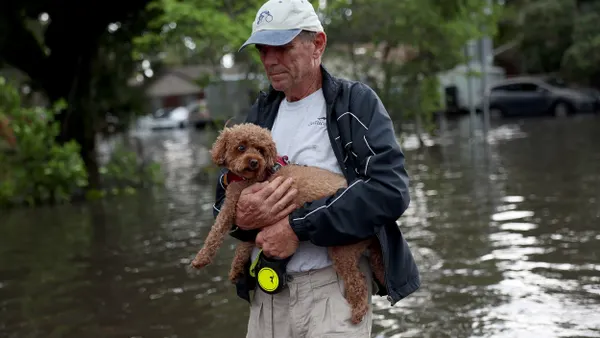Most restaurants in Berkeley, CA are now be closed or running limited service in response to COVID-19 and resulting shelter-in-place orders. But before they went dark, many were in the midst of adapting to one of the most aggressive ordinances around single-use waste anywhere in the country.
When the city's Single Use Disposable Foodware and Litter Reduction Ordinance was passed in January 2019, it drew widespread attention in waste reduction circles and a considerable display of consensus ahead of the final vote.
"We had a distributor of throw away foodware testify that we ‘should’ put him out of business. He didn't want to be part of trashing the planet and was going to switch to selling compostables,"recalled Sophie Hahn, a council member who helped craft the legislation, in a pre-pandemic email to Waste Dive. "A homeless man said that he carries around his own mugs, and all of his belongings, so everyone else should be able to do it too; and furthermore, he lives on the streets and doesn't want them to be full of plastic litter."
The ordinance was nearly a decade in the making with ongoing environmental advocacy, extensive data collection and technical assistance programs. This groundwork helped supporters feel confident in saying that eliminating single-use disposables — strategically and in certain situations — was a win for businesses, their bottom lines and the environment.
According to Miriam Gordon, a project manager at the nonprofit UPSTREAM, preparation for the ordinance began in 2011 with a waste audit performed by Clean Water Action that found food and beverage packaging accounted for 67% of litter on the San Francisco Bay Area's streets. This formed the basic argument behind a technical assistance program called ReThink Disposable, launched a year later with seed funding from the U.S. EPA. The program, which provides individualized consulting and waste auditing services to restaurants, has prevented over 17.8 million (or 200,000 pounds worth of) single-use items from entering the waste stream and saved over $500,000 for participating food businesses.
The concept has found success by targeting the restaurant industry’s tendency to default to disposable options such as serving meals "for here" in disposable "to go" foodware. Gordon says this practice has “only gotten worse over time" and has long baffled her and her colleagues.
“It just doesn’t make any sense,” Gordon said in an interview with Waste Dive. “Why should there be disposable packaging when there is dishwashing capacity in most restaurants? It’s a clear waste of materials and money.”
One fork at a time
A myriad of factors are behind the overreliance on disposables in dine-in situations. For Stephanie Aut, owner of the restaurant Honolulu BBQ in Alameda, CA that participated in ReThink’s program in 2019, the concerns were primarily logistical.
Though the restaurant had an industrial dishwasher in the back, it also had a small staff of just two people. The idea of washing all those reusables, Aut told ReThink’s case managers, seemed too burdensome. As a result, “every menu item in her store had its own container,” recalled a report. “An order of kimchi came in a paper pail, musubi in a plastic clamshell, fries in another.”
Following the program, Honolulu BBQ’s dine-in operations underwent a dramatic transformation. After investing $345 in durable eating utensils – for which ReThink reimburses up to $500 when funds are available – Aut reported saving $1,272 annually in inventory and waste hauling costs. The move reduced her reliance on disposable products by 58%, according to the case study.
Christina Grace, co-founder of Food Print Group which provides zero waste consulting services to food operators in New York City, said it’s often the case that food operators simply haven’t considered all the behind-the-scenes burdens. This can include the costs of replacing inventory every few months, the price of waste collection and the environmental toll of so much plastic.
“Dishwashing is not all that expensive, and if you’re using efficient dishwashers, these programs do start to pay for themselves,” she said in an interview with Waste Dive. Oftentimes, Grace finds that her clients were already trying to move away from plastic by switching to single-use compostable packaging, which is more expensive. “So then, the value proposition just keeps getting better from a dollars and cents perspective. But again, we all know that if we were paying the real cost of plastic, it would be a lot more expensive.”
Gordon saw that moving forward, it would be important to demonstrate both the financial and environmental costs of disposables. The added benefit, in her view, was that quantifying the problem could also help drive legislation in the future. This is what motivated ReThink Disposable’s early emphasis on collecting precise data about the fiscal impact of disposables to various food operators, which the program’s zero waste specialist Grace Lee said has been its most powerful tool so far.
The Foodware Calculator, developed by programmers at Clean Water Action before the launch, has allowed specialists to make data-driven estimates about changes to foodware practices and quantify the value of even the slightest changes.
Lee cited a Mexican restaurant called Acapulco, in Alameda, that initially just replaced single-use plastic salsa cups with reusables. It saved them a modest $71 per year, but prevented 4,258 single-use plastic cups from entering the waste stream in the same period.
“We’re more than happy when the owner is open to making just one change,” Lee said in an email to Waste Dive. Especially because “just making one change oftentimes opens up the floodgates to making many more to ditch single-use disposables.” Later on, Acapulco ended up switching to reusable linen napkins, which reduced the need for an estimated 70,393 disposable napkins every year.
Depending on the scale of the operation, these small tweaks can add up quickly. In 2019, 11 Subway franchises across the Bay Area each invested between $120 to $300 to purchase four dozen reusable cups for water and two dozen silverware sets for dine-in customers. According to ReThink’s calculations, even though dine-ins at Subway aren’t common, franchises still collectively saved $7,458 and prevented 4,367 pounds of waste annually.
Pandemic disruption
The broad support for the Berkeley ordinance when it passed, supporters say, was a testament to the compelling nature of all this data for restaurant operators. This also allowed for greater nuance in the requirements, which include provisions as specific as encouraging food operators to offer condiments in self-serve dispensers, because restaurants have shown it can be done.
Yet the new coronavirus, which has forced many locations into takeout-only mode, has brought a number of concerns to the forefront. Programs like ReThink Disposables and legislation like the Berkeley ordinance do much to address disposables in on-site dining, but they're less focused on reducing waste generated from takeout orders, which rely almost exclusively on single-use disposables.
In some cases, the switch to compostable takeout containers may actually be adding to businesses’ bottom lines, as certain products can sometimes be at least two times more expensive than non-biodegradable options. In an early March email to Waste Dive, Natha Freiburg Dempsey, president of the Foodservice Packaging Institute, argued that in addition to being a “safe, sanitary option” for distributing food, portability has long been one of the selling points of disposable foodware.
“As more and more foodservice establishments offer take-out and delivery options, foodservice packaging is what makes that possible. It keeps food as it's intended to be served – hot foods hot and cold foods cold – even as that food travels from the restaurant to a consumer's home or business.”
Before the virus outbreak, the final part of Berkeley's ordinance was set to take effect on July 1. Supporters hailed it as a model that might be applied elsewhere in the country and some national foodservice chains were exploring their own reusable concepts. Hahn’s office was unable to offer more current statements about where the ordinance stands due to the city’s public health emergency.
With many new questions about the recent reliance on disposables due to health concerns, at a time when some governments are delaying the enactment of new environmental policies, the Berkeley's ordinance future may be in flux. The city was on the leading edge of policy for reusables, but may have to figure out how they work once the pandemic is over.
To keep up with all of our coverage on how the new coronavirus is impacting U.S. cities, visit our daily tracker.











